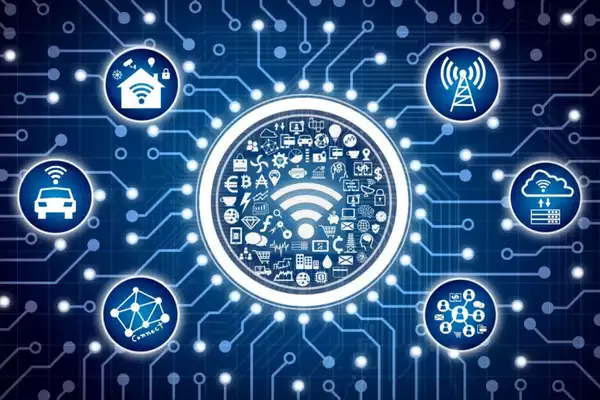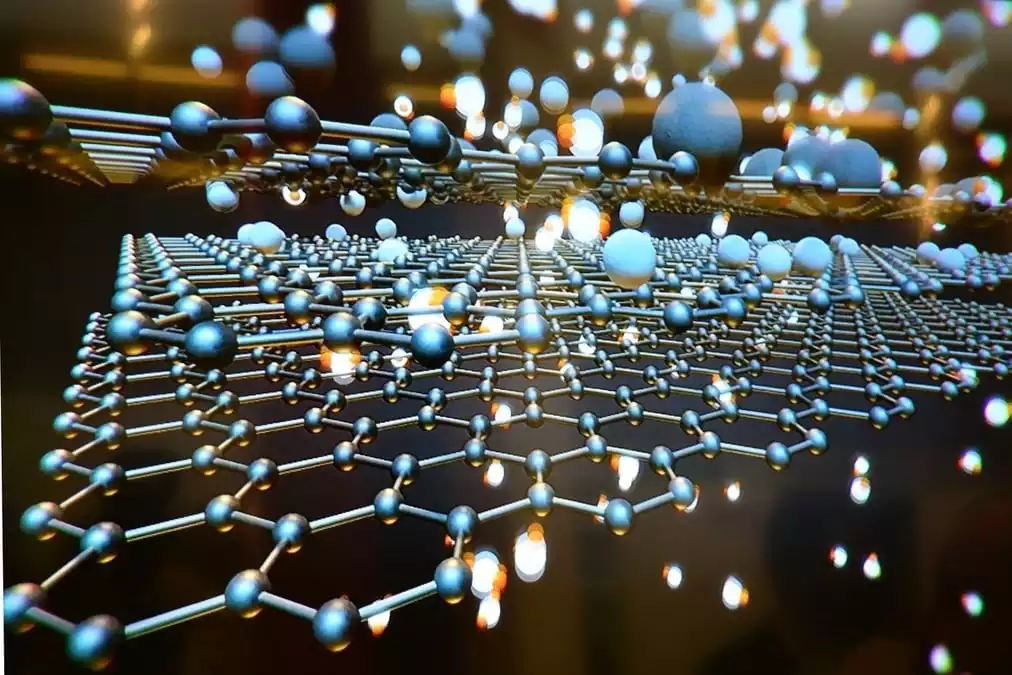The Secretary of Ministry of Electronics and Information Technology (MeitY) recently launched 2 initiatives focusing on Intelligent IoT: the Centre of Excellence (CoE) in Intelligent Internet of Things (IIoT) Sensors and India Innovation Centre for Graphene (IICG), at Maker Village, Kerala.
- Hardtech 2024 Program was also launched during the event.
About the Centre of Excellence (CoE) in Intelligent IoT Sensors:
- The objective of CoE in Intelligent IoT Sensors is to catalyze the development of sensors within the Intelligent IoT (Internet of Things) systems.
- Located at Makers Village Kochi, it is a unique facility developed by MeitY, Union Government, and Government of Kerala.
- Digital University Kerala (DUK) and Centre for Materials for Electronics Technology (CMET)-Thrissur will function as its technical partners.
- It will function as a centre for R&D (Research and development), incubation, innovation, skilling, capacity building, testing & certification for the development of IoT Sensors.
About the India Innovation Centre for Graphene (IICG):
- The IICG is India’s first Graphene Centre that has an objective tofoster R&D, product innovation, and capacity building in Graphene and 2D material systems.
- It was developed by the MeitY, Union Government, Government of Kerala and Tata Steel Limited.
- Technical assistance will be provided by the Digital University Kerala (DUK) and CMET-Thrissur.
- It will function as a centre for R&D (Research and development), incubation, innovation, skilling, capacity building, testing & certification for the development of application of Graphene based materials.
About the Hardtech 2024 Program:
- The Hardtech 2024 Program is Makers Village’s annual flagship program that will unite leaders from Industries, Startups, Investors, Academia, and R&D organizations in electronics hardware design and manufacturing.
Significance of the launches:
- The IIoT sensors and Graphene technologies has a role in driving digital transformation and economic growth.
- It will help in creation of a complete ecosystem for startups in IoT sensors and Graphene & 2D materials.
About the IoT Sensors:
- The IoT Sensors are pieces of hardware that detect changes in an environment and collect data.
- They’re the pieces of an IoT ecosystem that bridge the digital world to the physical world.
- IoT sensors may detect things like temperature, pressure, and motion, and if they are connected to a network, they can share data with the network.
Key Features of IoT Sensors:
- Data Collection: IoT sensors collect a wide range of data, including temperature, humidity, light, motion, and more, providing valuable insights for various applications.
- Connectivity: These sensors are equipped with wireless connectivity options like Wi-Fi, Bluetooth, and cellular networks, ensuring seamless data transmission.
- Low Power Consumption: IoT sensors are designed to operate on minimal power, prolonging battery life and reducing maintenance needs.
- Miniaturization: Advancements in sensor technology have led to smaller and more compact designs, allowing integration into various devices and environments.
Applications of IoT Sensors:
- Smart Cities:
- IoT sensors can monitor traffic flow, air quality, and energy consumption, enabling efficient urban planning.
- Smart parking systems help reduce congestion and improve parking availability.
- Healthcare:
- Wearable IoT sensors can track vital signs, enabling remote patient monitoring.
- Smart pill bottles remind patients to take medication, improving adherence.
- Agriculture:
- Soil moisture sensors can optimize irrigation, conserving water resources.
- IoT sensors in livestock tracking enhance animal health and breeding management.
- Manufacturing:
- Industrial IoT sensors can enhance predictive maintenance, reducing downtime.
- Quality control sensors ensure product consistency and minimize defects.
- Environmental Monitoring:
- IoT sensors can monitor pollution levels, water quality, and climate conditions.
- Early warning systems for natural disasters rely on real-time data from sensors.
Benefits of IoT Sensors:
- Efficiency: Optimized operations and resource utilization in various sectors.
- Cost Savings: Reduced energy consumption, maintenance, and downtime.
- Safety: Enhanced safety through real-time monitoring and alerts.
- Data-Driven Decision Making: Informed decisions based on accurate and timely data.
Future Prospectus:
- 5G Integration: High-speed 5G networks will enable faster and more reliable data transmission for IoT devices.
- Edge Computing: Processing data at the edge (near the sensor) will reduce latency and enhance real-time analytics.
- AI and Machine Learning: Integration of AI algorithms will enable IoT sensors to make autonomous decisions and predictions.
[ref-AKCP]
About the Graphene:
- Graphene is a single layer of carbon atoms arranged in a hexagonal lattice, making it a 2-dimensional material.
- It was isolated and characterized in 2004 by Andre Geim and Konstantin Novoselov, earning them the Nobel Prize in Physics in 2010.
- National Graphene Mission is a government initiative to propel India as a global leader in graphene technology.
Key Properties:
- Exceptional conductivity: Graphene exhibits remarkable electrical conductivity, making it a potential candidate for use in electronics.
- Strength and flexibility: Graphene is stronger than steel and highly flexible, making it suitable for various applications, including structural materials.
- Transparency: It is nearly transparent, allowing for potential applications in transparent electronics and optoelectronics.
Graphene Production Techniques:
- Chemical Vapor Deposition (CVD): A widely used method for graphene synthesis in India, with ongoing efforts to optimize for large-scale production.
- Liquid-Phase Exfoliation (LPE): Indian researchers are investigating environmentally friendly solvents and scalable processes to enhance LPE efficiency.
Applications:
- Electronics: Graphene’s excellent conductivity has sparked interest in creating faster and more efficient electronic devices, such as transistors and flexible displays.
- Energy storage: Graphene-based materials are being explored for advanced energy storage devices, including batteries and supercapacitors, due to their high surface area and conductivity.
- Materials science: Its strength and flexibility make it an ideal material for strengthening materials in various industries, from aerospace to construction.
- Medical applications: Graphene is being explored for various biomedical applications, including drug delivery systems and biosensors.
- Space exploration: Graphene’s lightweight and strong properties make it a candidate for applications in space exploration technologies.
Challenges:
- Mass production: Large-scale production of high-quality graphene remains a challenge, hindering its widespread commercial applications.
- Integration: Incorporating graphene into existing technologies and manufacturing processes requires further research and development.
Ref: Source
| UPSC IAS Preparation Resources | |
| Current Affairs Analysis | Topperspedia |
| GS Shots | Simply Explained |
| Daily Flash Cards | Daily Quiz |




